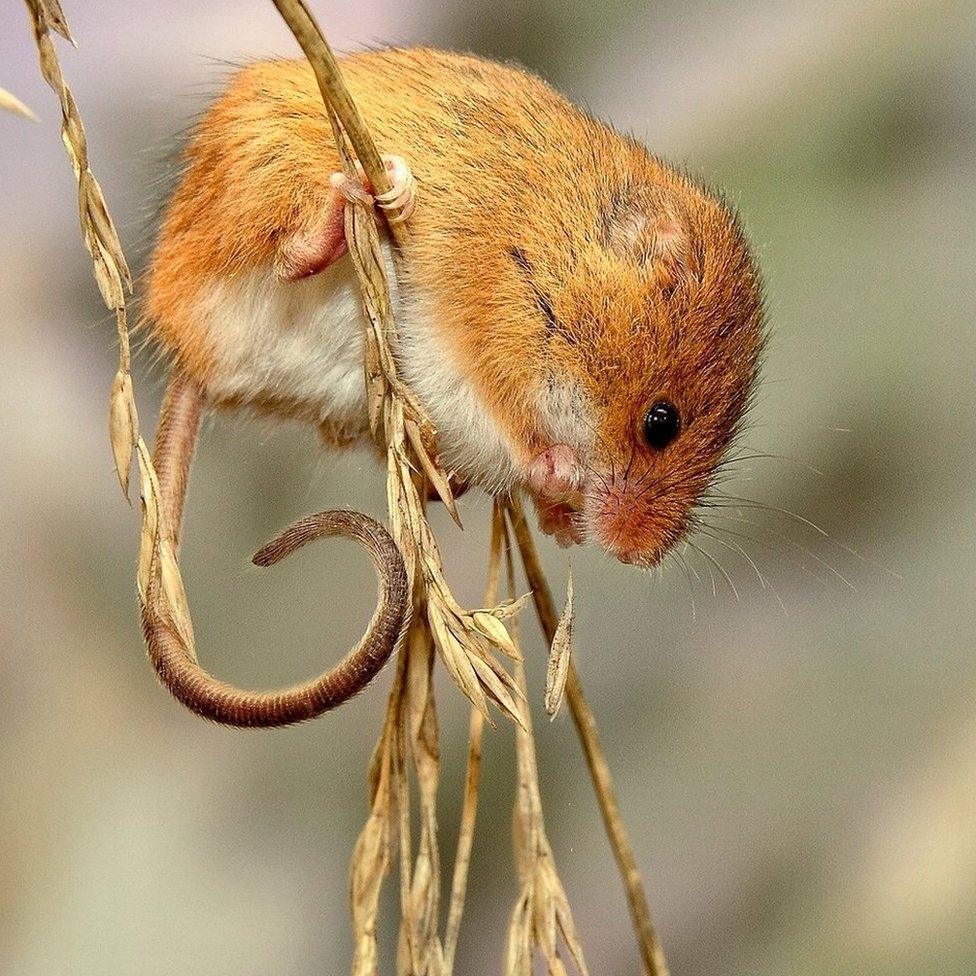Harvest mice 'rediscovered' in Selborne
- Published

Harvest mice were thought to have been extinct in the Selborne area for more than 25 years
Rare harvest mice have been rediscovered in the village where the species was first identified.
More than 150 nests of the tiny mammal have been found around Selborne, Hampshire. They had been thought to be locally extinct for more than 25 years.
Local farmers and volunteers had planted hedges and maintained grass strips to encourage their habitat.
Environment Secretary Elizabeth Truss said it showed an "innovative approach" to managing farm land.
Harvest mice are classed as a species for priority conservation action, and were in decline as a result of loss of habitat and modern farming practices.
'Wider landscape'
Farmers around Selborne worked with volunteers to conduct surveys and carry out work around arable fields to create connected habitats for birds, small mammals and insects.
The work was carried out by a so-called "cluster" of 11 farmers covering 4,000 hectares (almost 10,000 acres) of land, one of nine clusters run by the Game and Wildlife Conservation Trust with support from Natural England.
Ms Truss said: "The Selborne farmer cluster is a great example of responsible landowners thinking beyond their own fields, meadows and woodlands and looking at the wider landscape to deliver greater environmental benefits on a larger scale."
The village is the birthplace of famous naturalist Gilbert White who first distinguished the harvest mouse, micromys minutus, as a species in 1767.

The harvest mouse
Scientific name is micromys minutus
Grows up to 70mm in size and weigh 4-6g
Found in England from central Yorkshire southwards
Diet is a mixture of seeds, berries and insects although they rarely damage cereal crops
Their long, hairless tail aids climbing through the tall, dense vegetation of their meadow, hedgerow and crop field homes
They weave complex spherical nests out of grass - a breeding nest is roughly the size of a cricket ball and built about a metre above ground in spring and summer
Another smaller nest is built closer to the ground and used in winter for sleeping and storing food
Source: BBC Nature/The Mammal Society, external

- Published17 October 2010